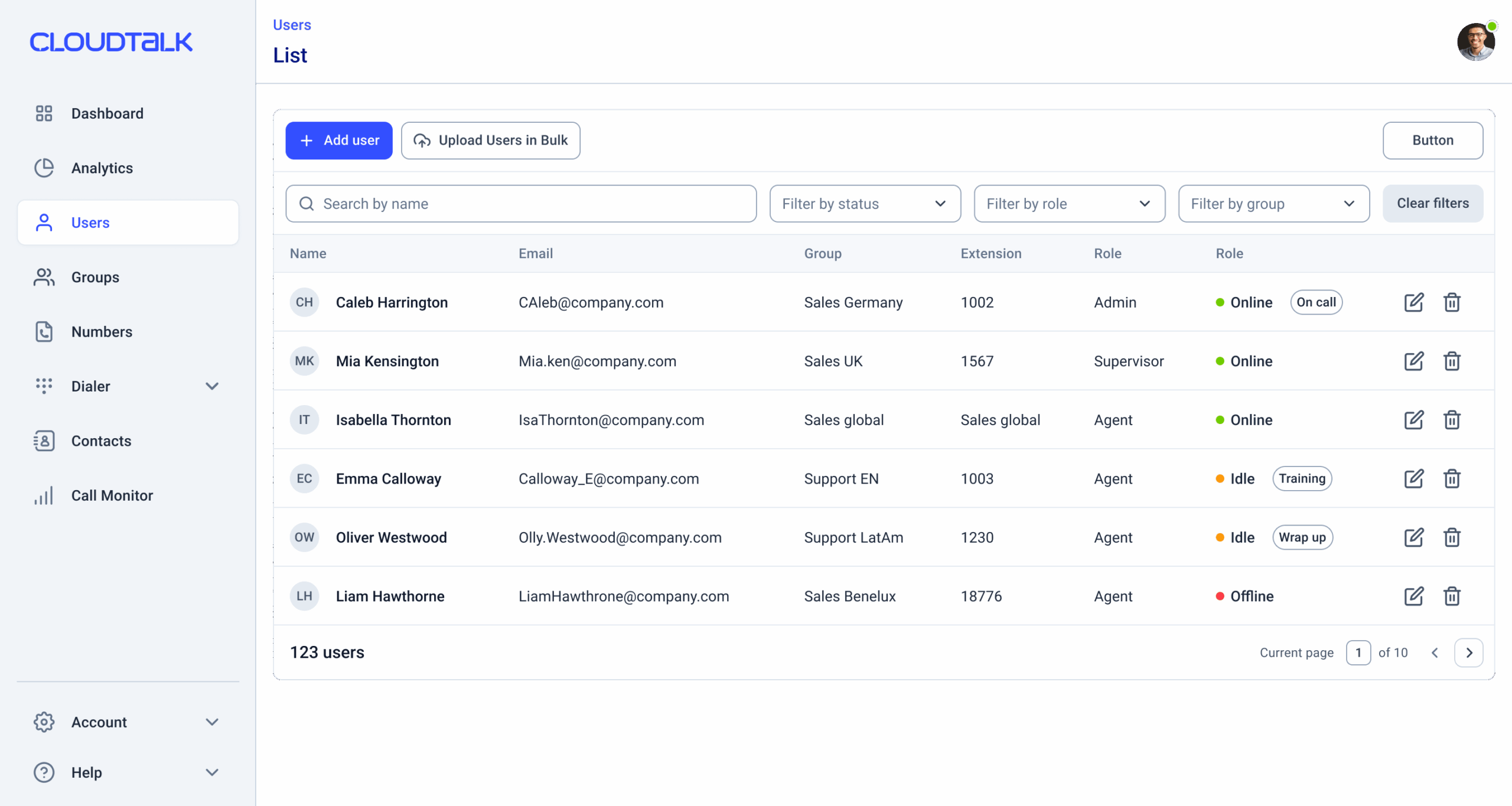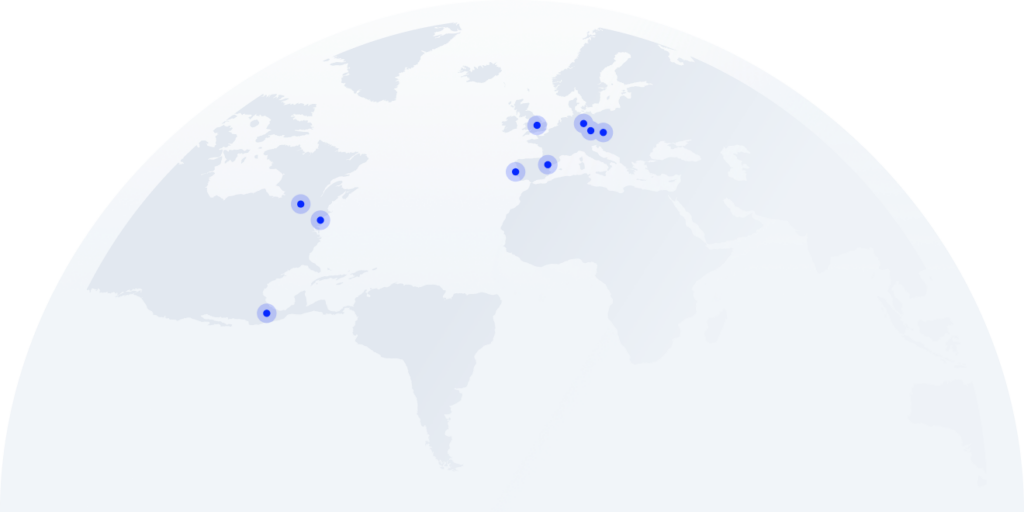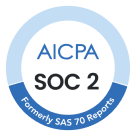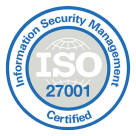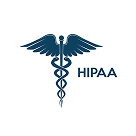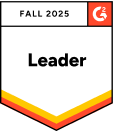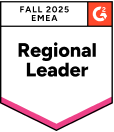The phones never stop ringing. Tickets pile up faster than your team can clear them. One overwhelmed agent calls in sick, and suddenly wait times double. This is the reality of managing contact center productivity: constant pressure, high stakes, and very little margin for error.
When productivity slips, the fallout is immediate. Customers wait longer and leave less satisfied, while agents face mounting stress. Research shows that 76 percent of employees experience burnout at least sometimes 1, while surveys reveal that improving first call resolution by just 1 percent can save up to $276,000 annually2. Productivity gaps are not just operational problems, they are costly.
The path forward is not about forcing agents to handle more calls. It is about smarter processes, clearer metrics, and targeted improvements that strengthen both efficiency and morale. This guide will show you how to measure call center productivity, identify what slows teams down, and apply proven steps to achieve peak performance.
Key takeaways
-
Contact center productivity is about balancing efficiency and quality, not just speed.
-
Tracking the right metrics such as AHT, FCR, and QA scores provides a clear picture of performance.
-
Productivity often suffers from tool silos, poor routing, and heavy after-call work, but these can be solved with smarter processes.
-
Best practices like automation, continuous monitoring, and multichannel readiness improve both agent efficiency and customer experience.
-
CloudTalk helps boost productivity in a call center with AI-driven insights, seamless integrations, and real-time monitoring.
You’ve seen what’s at stake. Productivity isn’t optional, it’s your edge.
What Is Contact Center Productivity?
Contact center productivity is the balance between how efficiently a team handles customer interactions and the quality of the outcomes. It is not just about speed or call volume, but about delivering timely, accurate resolutions while using resources wisely. In other words, a productive operation resolves more inquiries, keeps costs under control, and maintains strong customer satisfaction.
At its core, call center productivity means maximizing the value of every minute an agent spends supporting customers. This includes reducing wasted time, avoiding repeated contacts, and ensuring that agents have the right tools to succeed. Organizations that improve contact centre productivity often do so by streamlining workflows and adopting smarter solutions such as multichannel contact center platforms or virtual call center software that help teams manage interactions more seamlessly.
Clarity starts with the right definition. Now put it into practice.

How to Calculate Contact Center Productivity
Measuring contact center productivity means more than tracking raw numbers. The right formula highlights where your team is effective and where resources are being wasted. Below are three proven ways to calculate productivity, each with its own purpose.
Contact Center Productivity Formula
The most direct method is a broad calculation of overall output against the hours paid. This approach helps leaders see how effectively their workforce converts time and wages into resolved customer issues. It works best as a high-level snapshot of efficiency across the entire operation.
How to calculate:
For example, if a team resolves 1,200 customer contacts in 400 agent hours, the productivity score is 3. This means agents successfully resolve three interactions per hour on average.
How to Calculate Call Resolution Rate
Resolution rate zeroes in on the quality of customer service, not just the volume of calls. A higher rate means customers get their issues solved on the first attempt, which reduces repeat contacts and boosts satisfaction. This measure is particularly useful when analyzing agent productivity in call center operations where the goal is quality outcomes.
How to calculate:
If an agent resolves 450 out of 500 interactions, their call resolution rate is 90 percent. High performers here often benefit from strong training programs and efficient contact center integration.
How to Calculate Ratio of Output to Input
This method provides a flexible lens to view productivity through both results and costs. Outputs can include resolved calls, sales closed, or CSAT scores, while inputs cover hours worked, licenses, and technology spend. It is ideal for operations leaders who want to balance financial performance with service quality.
How to calculate:
For instance, if a center generates $100,000 in revenue or value from customer interactions while spending $25,000 on staffing and tools, the ratio is 4:1. This means every dollar invested produces four dollars in return. Using solutions like call center automation makes it easier to improve this ratio by reducing repetitive tasks.
Key Metrics for Contact Center Productivity
You cannot improve what you do not measure. Metrics are the foundation of effective contact center productivity management because they show whether agents are working efficiently, how customers perceive the service, and where operational gaps exist. Tracking the right numbers helps leaders spot bottlenecks, prevent burnout, and ensure every customer interaction creates value.
Below are ten of the most important metrics for measuring and improving productivity in a call center.
1. Average Handle Time (AHT)
Definition: Average Handle Time measures the average duration of a customer interaction, including talk time, hold time, and after-call work.
Why it matters: High AHT suggests inefficiency, while very low AHT can signal rushed or poor-quality service. The goal is balance — efficient calls without sacrificing resolution.
Formula:
Average Handle Time = (Total talk time + Total hold time + Total after-call work) / Total number of calls
Example: If agents spend 6,000 minutes across 1,000 calls, the AHT is 6 minutes.
2. First Contact Resolution (FCR)
Definition: This metric tracks how often customer issues are solved on the first interaction.
Why it matters: Higher FCR rates reduce repeat calls, lower costs, and boost customer satisfaction. It is one of the strongest indicators of agent productivity in call center performance.
Formula:
FCR (%) = (Number of issues resolved on first contact / Total number of issues) × 100
Example: If 850 out of 1,000 inquiries are resolved during the first contact, the FCR is 85 percent.
3. Service Level
Definition: Service level measures the percentage of calls answered within a defined time threshold.
Why it matters: It reflects how accessible your center is and whether staffing matches demand.
Formula:
Service Level (%) = (Calls answered within target time / Total incoming calls) × 100
Example: If 800 of 1,000 calls are answered within 30 seconds, the service level is 80 percent.
4. Abandonment Rate
Definition: The percentage of callers who hang up before speaking to an agent.
Why it matters: High abandonment rates show customers are waiting too long, which hurts satisfaction and revenue.
Formula:
Abandonment Rate (%) = (Abandoned calls / Total incoming calls) × 100
Example: If 200 of 1,000 calls are abandoned, the rate is 20 percent.
5. Occupancy Rate
Definition: Occupancy rate shows how much of an agent’s time is spent actively handling calls versus waiting or idle.
Why it matters: A healthy rate means staff are utilized efficiently without being overloaded.
Formula:
Occupancy Rate (%) = (Total handle time / Total logged-in time) × 100
Example: If an agent spends 6 hours handling calls out of 8 logged-in hours, the occupancy rate is 75 percent.
6. Agent Utilization
Definition: This measures the proportion of paid hours that an agent spends on productive activities, including calls and after-call work.
Why it matters: It helps leaders see if staffing and scheduling align with actual workload.
Formula:
Agent Utilization (%) = (Total talk time + After-call work) / Paid working hours × 100
Example: If an agent works 40 paid hours and spends 30 of those hours in talk time and after-call work, their utilization is 75 percent.
7. Schedule Adherence
Definition: This shows how closely agents follow their assigned schedules, including logins, breaks, and shifts.
Why it matters: Poor adherence causes service gaps and increases wait times for customers.
Formula:
Schedule Adherence (%) = (Total time logged in as scheduled / Total scheduled time) × 100
Example: If an agent is scheduled for 40 hours but only adheres for 36, their schedule adherence is 90 percent.
8. After-Call Work (ACW)
Definition: The average time agents spend completing tasks after each call, such as logging notes or updating CRM data.
Why it matters: High ACW slows down workflows. Efficient processes and tools like call center automation help reduce it.
Formula:
ACW = Total after-call work time / Total number of calls
Example: If agents spend 500 minutes on after-call work for 1,000 calls, ACW is 0.5 minutes per call.
9. Contacts per Hour
Definition: This measures the average number of customer contacts an agent handles each hour.
Why it matters: It indicates individual contact center agent productivity and helps benchmark efficiency across the team.
Formula:
Contacts per Hour = Total number of contacts handled / Total agent hours worked
Example: If 600 calls are handled over 200 agent hours, the result is 3 contacts per hour.
10. Quality Assurance (QA) Score
Definition: QA scoring evaluates the quality of interactions based on set criteria such as compliance, empathy, and accuracy.
Why it matters: It ensures high performance is not only about quantity but also about delivering consistent customer satisfaction. Tools for call center monitoring help track QA performance effectively.
Formula:
QA Score (%) = (Total points earned / Total points possible) × 100
Example: If an agent earns 85 points out of a possible 100, their QA score is 85 percent.
Together, these ten metrics provide a clear view of productivity in a call center by combining efficiency, cost control, and quality assurance. Using tools like contact center software pricing calculators or multichannel contact center platforms helps leaders track and act on these numbers in real time.
Quick Reference Table
| Metric | Why It Matters | Formula |
|---|---|---|
| Average Handle Time (AHT) | Balances efficiency and call quality | (Total talk time + Total hold time + Total after-call work) / Total number of calls |
| First Contact Resolution (FCR) | Reduces repeat contacts and boosts satisfaction | (Issues resolved on first contact / Total issues) × 100 |
| Service Level | Measures accessibility and responsiveness | (Calls answered within target time / Total incoming calls) × 100 |
| Abandonment Rate | Highlights customer frustration and lost opportunities | (Abandoned calls / Total incoming calls) × 100 |
| Occupancy Rate | Shows if agents are efficiently utilized | (Total handle time / Total logged-in time) × 100 |
| Agent Utilization | Tracks how much of paid time is productive | (Total talk time + After-call work) / Paid working hours × 100 |
| Schedule Adherence | Ensures staffing matches demand | (Time logged in as scheduled / Total scheduled time) × 100 |
| After-Call Work (ACW) | Identifies workflow inefficiencies | Total after-call work time / Total number of calls |
| Contacts per Hour | Indicates contact center agent productivity | Total number of contacts handled / Total agent hours worked |
| Quality Assurance (QA) Score | Ensures consistency, quality, and compliance | (Points earned / Points possible) × 100 |
Numbers don’t lie. Make them work for you.
Why Contact Center Productivity Matters
Measuring and improving contact center productivity is not just about numbers. It directly influences customer satisfaction, employee morale, and the financial health of the business. Here are six reasons why it matters.
1. Lower Cost per Contact
Productivity shows how efficiently resources are used. By handling interactions faster and resolving more on the first attempt, companies reduce the cost of each call or message. Leaders who track these costs can forecast budgets more accurately and make smarter decisions about contact center software pricing.
2. Better Customer Experience
Efficient service means shorter wait times and faster resolutions. Customers value speed as much as accuracy, and consistent performance strengthens loyalty. Improving call center productivity ensures your team delivers reliable support that keeps customers coming back.
3. Reduced Agent Burnout
When systems are clunky and processes inefficient, stress levels climb. Higher productivity in a call center creates smoother workflows and fairer workloads, helping agents focus on quality service instead of fighting constant pressure. This lowers attrition and boosts morale across the team.
4. Scalability During Peaks
Seasonal spikes or unexpected surges test a team’s limits. A highly productive center scales more smoothly by using resources wisely and leveraging virtual call center software to distribute workloads across remote teams. This prevents bottlenecks and keeps service levels steady during high demand.
5. Improved Forecasting Accuracy
Tracking metrics consistently creates data you can trust. That data makes it easier to predict staffing needs, set realistic KPIs, and prepare for peak demand. Leaders who understand contact centre productivity can align resources with demand before problems arise.
6. Stronger Compliance and Quality Assurance
Productivity does not mean cutting corners. With consistent monitoring and call center monitoring, managers ensure agents meet compliance requirements while maintaining high service standards. This protects both customer trust and business reputation.
Reasons Your Contact Center Productivity Is Low
Even small inefficiencies can snowball and sap contact center productivity. Here are eight common bottlenecks to watch for—and fix:
-
Poor call routing and queuing logic – When customers get bounced around before speaking to the right agent, calls drag on and morale suffers. Reassess your IVR or skill-based routing rules to reduce wasted time and repetitive transfers.
-
Fragmented tools and siloed systems – Working across disjointed platforms drains workflows. Without proper contact center integration, agents waste time switching windows or hunting down information.
-
Manual after-call tasks (ACW overload) – When agents log notes or update records manually after each call, productivity slows. Automating documentation with call center automation tools helps reduce this burden.
-
Inadequate training and onboarding – New or undertrained agents spend more time on each call and are likelier to escalate issues. Clear training pipelines and coaching can raise agent productivity in call center performance across the board.
-
Weak workforce scheduling and forecasting – Misaligned staffing causes peaks of long waits and troughs of idle time. Without real-time call center monitoring, teams can’t adapt to load in the moment.
-
Outdated or irrelevant KPIs – If you measure the wrong things—like pure call volume instead of quality or efficiency—you overlook the true drivers of productivity. Modern contact centre productivity demands balanced KPIs.
-
Low multichannel visibility – Agents lose time flipping between email, chat, social, and voice if systems aren’t unified. A true multichannel contact center approach gives a complete view and smoother handoffs.
-
Lack of recognition or feedback loops – Without timely performance feedback or recognition, agents lose motivation. Regular QA reviews and acknowledgment of wins promote consistent productivity and sustained morale.
Spot the problems and fix them for good.

9 Tips and Best Practices for Improving Productivity in Your Contact Center
Improving contact center productivity takes more than chasing numbers. It requires smarter systems, motivated teams, and the right technology to keep everything moving smoothly. Here are nine practical steps to make it happen.
1. Audit Your Current Processes
Start by mapping every step in your customer journey. From IVR menus to after-call work, identify bottlenecks and redundancies that waste time. Even simple fixes, like refining scripts or adjusting call flows, can unlock major efficiency gains.
Review your workflows today and use call center monitoring to pinpoint weak spots.
2. Improve Your Self-Service Options
Customers often prefer solving simple issues themselves. By expanding FAQs, chatbots, and IVR menus, you reduce call volume and free agents for complex cases. This directly boosts productivity in a call center.
Strengthen your self-service setup with call center automation and watch your handle times shrink.
3. Leverage AI to Eliminate Time-Consuming Tasks
AI can automate note-taking, generate call summaries, and even score calls for quality. This reduces after-call work and gives managers real-time insights into contact centre productivity.
Try CloudTalk’s AI features to remove repetitive tasks and let your team focus on customers.
4. Provide Your Agents with the Best Tools and Tech Stack
Agents stuck with outdated systems lose time switching screens or searching for data. A modern stack with contact center integration centralizes customer information and eliminates wasted effort.
Equip your team with virtual call center software so they can serve customers faster and better.
5. Closely Track Agent Performance
Tracking metrics like AHT, FCR, and utilization reveals how effectively individuals work. Performance monitoring helps managers identify coaching needs, improve agent productivity in call center operations, and recognize top performers.
Use advanced call center monitoring to keep your finger on the pulse of team performance.
6. Teach Your Team to Be Multi-Channel Agents
Customers expect seamless service across voice, email, and chat. Training agents as multi-channel specialists reduces silos and improves response times. The result is higher efficiency across the board.
Explore CloudTalk’s multichannel contact center features to unify customer communication.
7. Implement Continuous Monitoring and Training
One-off training sessions fade quickly. Continuous monitoring, coaching, and knowledge-sharing keep skills sharp and prevent errors. This leads to higher consistency and stronger compliance.
Build regular feedback loops with call center monitoring to support ongoing improvement.
8. Engage and Incentivize Your Employees
Motivated agents are productive agents. Recognition programs, incentives, and clear career paths reduce turnover and keep morale high. Engagement directly influences performance and customer outcomes.
Create a recognition plan today and celebrate wins to boost contact center agent productivity long term.
9. Optimize Workforce Scheduling
Smart scheduling ensures agents are available when demand peaks and not idle during lulls. Using data to balance staffing with forecasted call volume improves efficiency and lowers costs.
Use workforce data and contact center software pricing analysis to optimize scheduling without overspending.
Every Call Is a Chance to Win. Don’t Waste It.
A single resolved call can save a customer. Lift a team’s mood. Protect revenue. Small moments carry big weight when they add up across the day.
True contact center productivity is not about squeezing more calls into every shift. It comes from smarter systems, connected tools, and yes, AI working quietly in the background. When embedded into workflows, AI can automate routine tasks, surface insights managers can act on, and give agents the freedom to focus on customers instead of admin.
With CloudTalk, that balance is built in. Calls flow to the right people, teams work more smoothly, and managers see the bigger picture without losing track of details. The result is more clarity, less waste, and better outcomes for everyone.
You don’t need to overhaul everything. You just need the right platform to make every call count.

Every call is a chance to shine. Don’t miss a single one.

Sources:
1 – Gallup
2 – SQM

